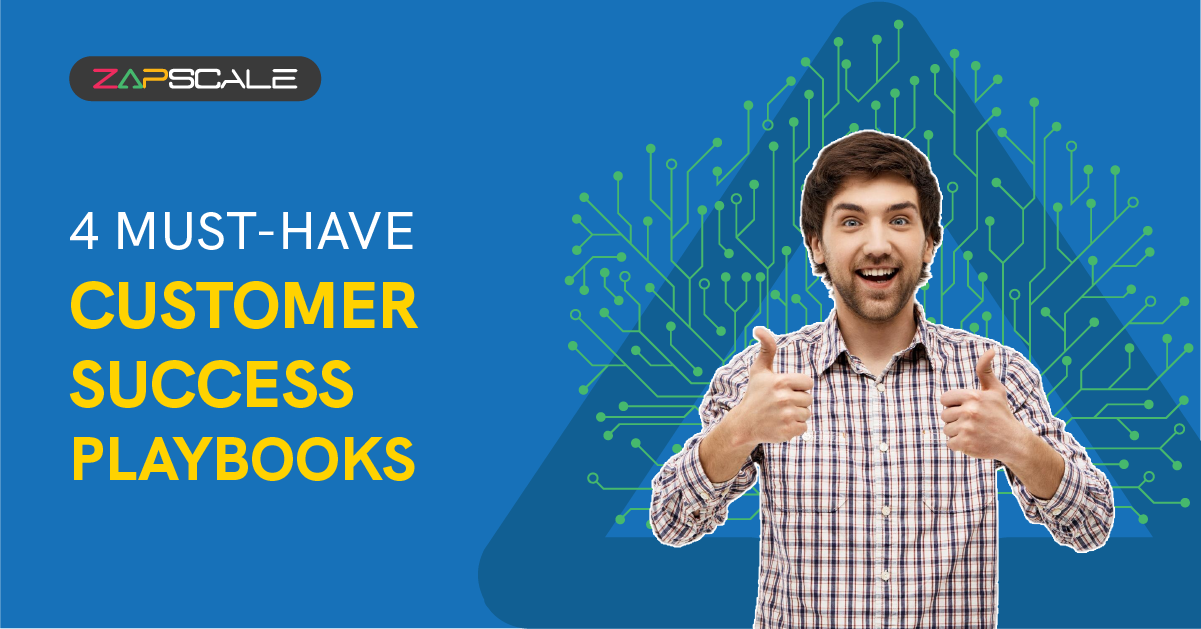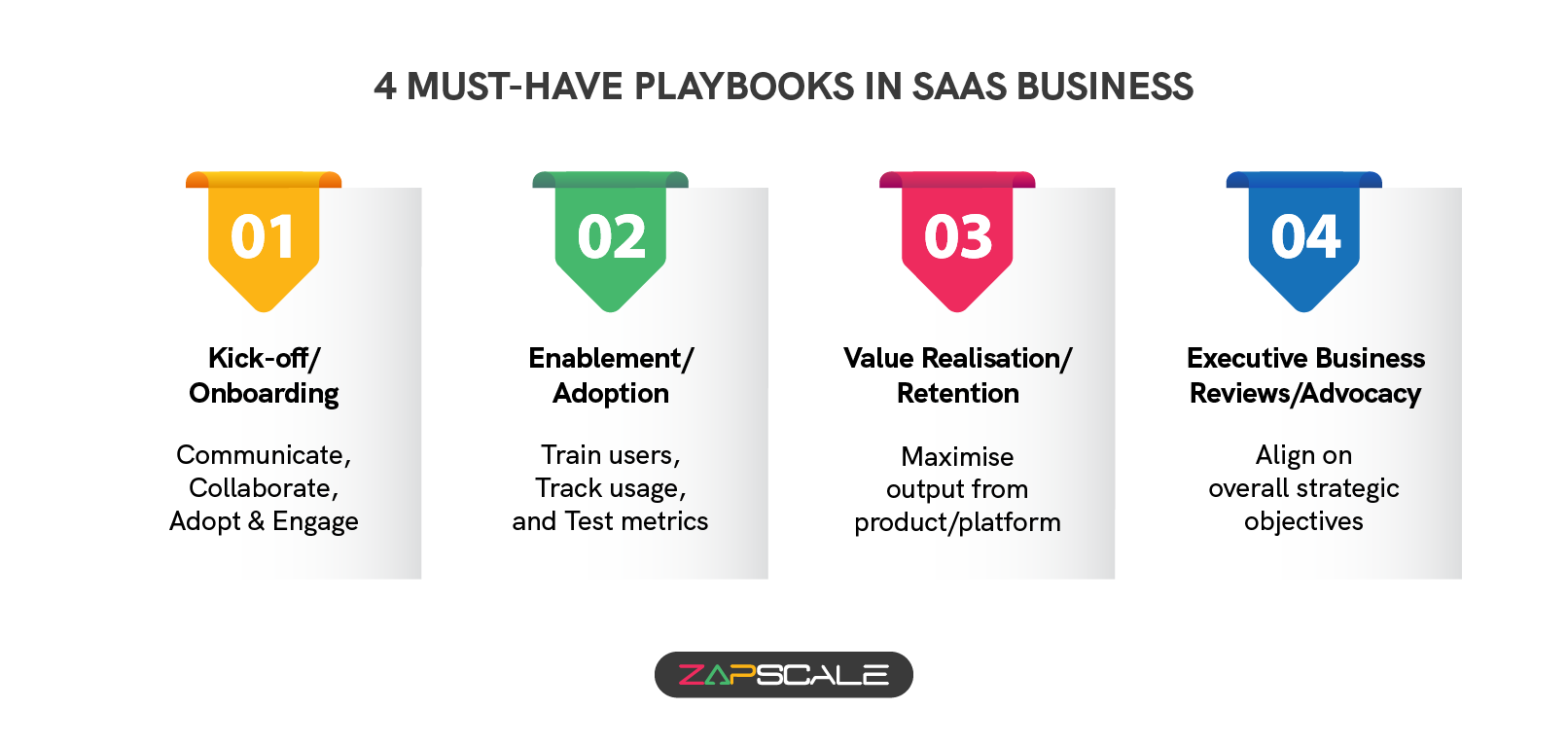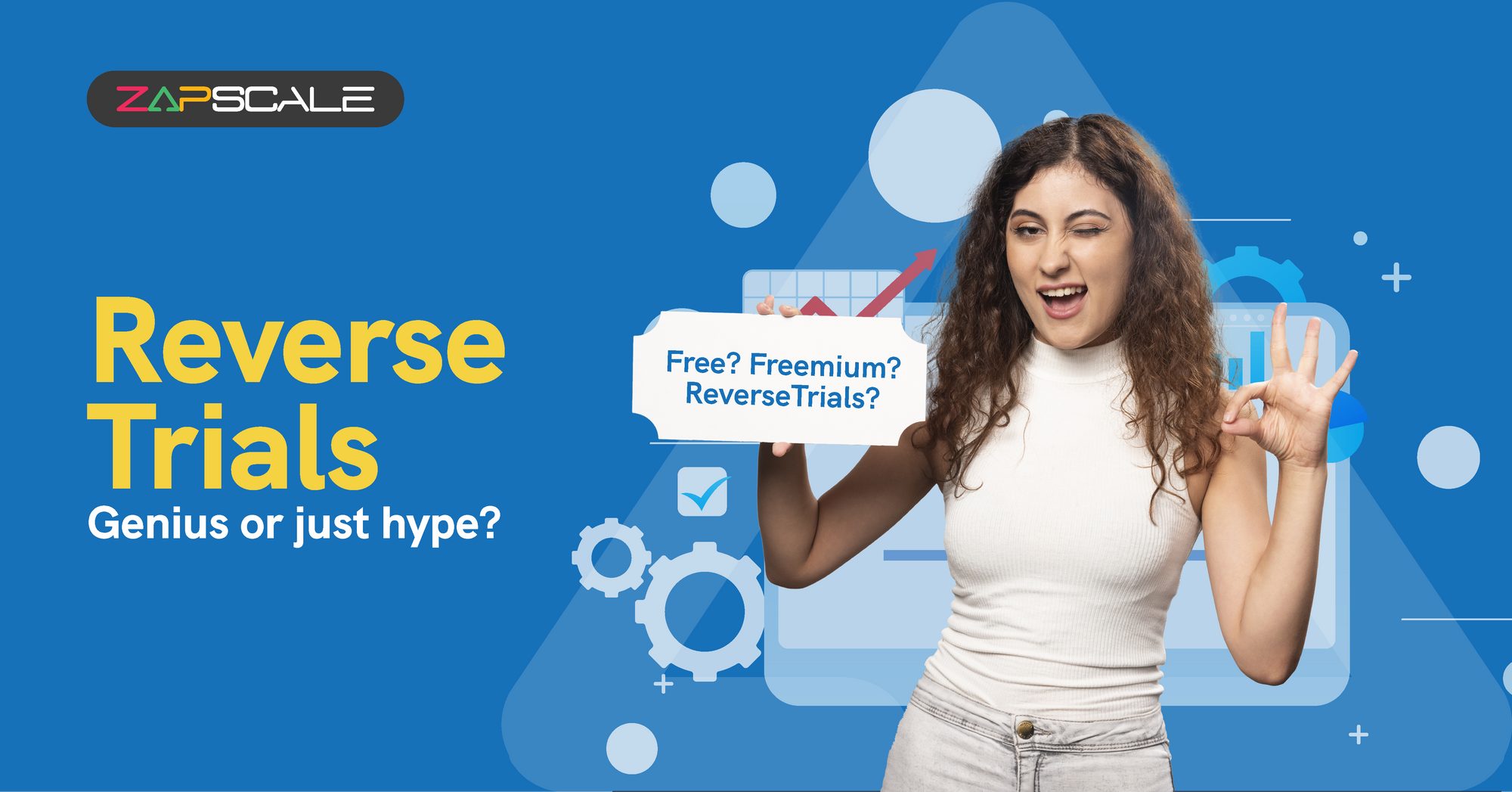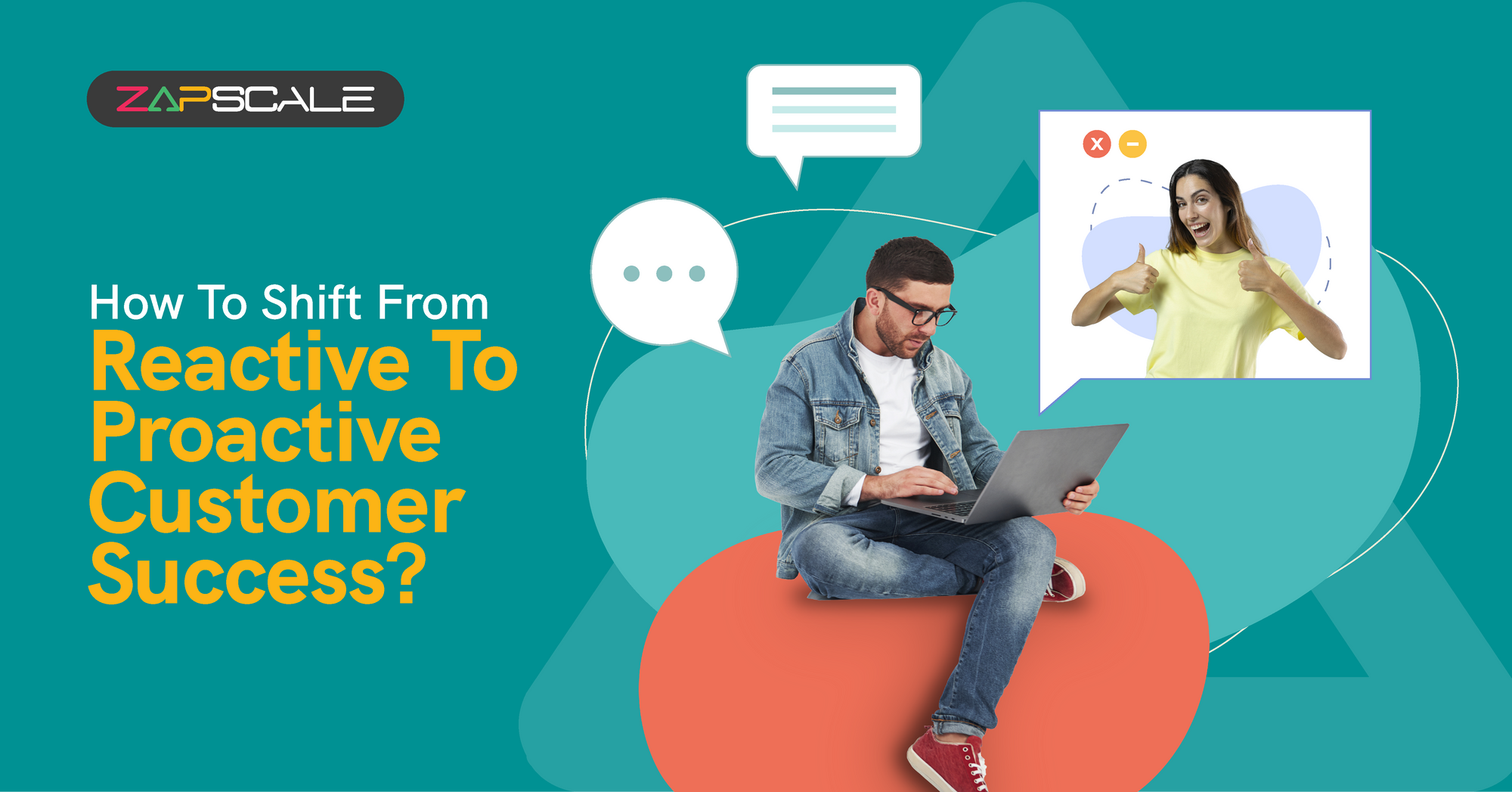CATEGORY > Customer Success Management
4 Customer Success Playbooks Every SaaS Business Must Have

What Are Customer Success Playbooks?
A playbook or an SOP (Standard Operating Procedure), please bear with my operational mindset and a little bit of the Army upbringing, is a way of doing a set of tasks and following each step along the way to arrive at a preset outcome after these activities are carried out.
A customer success playbook then becomes these SOPs that enable any activities that are critical to the customer success journey.
In my experience, these playbooks include:
1. Kick-off/Onboarding: Communicate, collaborate, adopt & engage
2. Enablement/Adoption: Train users, track usage, and test metrics
3. Value Realisation/Retention: Maximise output from product/platform
4. Executive Business Reviews/Advocacy: Align on overall strategic objectives
Importance of CS Playbooks for Effective Customer Success Strategy
Playbooks become essential for an effective customer success strategy because they provide a structured, repeatable framework that ensures consistency and efficiency in customer interactions.
By defining clear processes and best practices, playbooks help customer success teams systematically address customer needs and drive successful outcomes. They also help in standardising the customer experience across the organisation.
For example, in a SaaS company providing project management software, one of the playbooks could outline specific steps for new customer onboarding, including initial setup guidance, training sessions, and regular check-ins.
This onboarding playbook can include detailed instructions for setting up workspaces, customising project templates, and inviting team members.
This systematic approach results in a two-fold boost: fostering long-term customer engagement and loyalty.
In the end, we’re all working towards building solid relationships, and this guide will steer us in that direction.
CS playbooks transform customer success from a reactive to a proactive discipline, allowing SaaS businesses to deliver consistent, high-quality support that aligns with their strategic objectives.
4 Must-Have Playbooks For Your Customer Success Strategy

1. Kick-off/Onboarding
Communicate, collaborate, adopt & engage.
This playbook is designed to ensure a smooth transition for new customers. It focuses on clear communication and collaboration between the customer and the success team.
This playbook outlines steps for initial setup, training sessions, and customer engagement strategies to familiarise users with the product.
Example: For a project management tool, this might include setting up initial project templates, conducting training webinars, and scheduling regular follow-ups to address any early issues.
This structured approach helps customers quickly adapt and see value, reducing churn.
2. Enablement/Adoption
Train users, track usage, and test metrics.
This playbook involves tracking user engagement and performance metrics to identify areas where additional support or training could be required.
By continuously testing and refining these metrics, customer success teams can ensure users are fully enabled to leverage the product’s features effectively.
Example: Consider a SaaS platform for marketing automation. The playbook would include step-by-step guides on using key features, periodic check-ins to assess adoption rates, and metrics to identify users who need additional support.
By ensuring thorough adoption, the platform maximizes customer satisfaction and usage.
3. Value Realisation/Retention
Maximise output from product/platform.
This playbook is crucial for helping customers achieve and recognize the maximum value from the product.
This involves strategies to optimize usage, regular check-ins to assess progress, and interventions to address any issues that may arise.
The steps included here also help with measuring and quantifying the value delivered through and after the onboarding process and validate the tangible benefits as seen after adoption.

Example: For an analytics tool, this playbook might involve monthly reviews to discuss data insights and optimization strategies, ensuring customers see tangible benefits and remain engaged with the product.
4. Executive Business Reviews/Advocacy
Align on overall strategic objectives.
This playbook facilitates high-level strategic alignment between the customer and the product/service provider.
It involves regular business reviews with key stakeholders to discuss performance, outcomes, and strategic objectives.
This playbook ensures that the product’s value is communicated and aligned with the customer’s business goals, fostering a partnership that encourages advocacy and long-term commitment.
Example: this might include bi-annual meetings with C-level executives to review the impact of the software on their business goals, discuss future needs, and explore opportunities for deeper integration.
Conclusion
Customer success playbooks are not just about following steps—they are strategic tools that drive consistency, efficiency, and satisfaction.
Playbooks ensure that every customer interaction is purposeful and value-driven.
There is a flip side to playbooks too, as always, let’s be real — your organization or your team may not be ready for playbooks yet. And that is alright.
Assess the readiness, start small, be flexible, review regularly the need for this process & tweak as needed, train the team and get their buy-in, and lastly, make sure to balance structure with personalisation.
ABOUT THE AUTHOR
Popular from Customer Success Management
Quality Content,
Straight To Your Inbox!
Subscribe for the latest blogs, podcasts, webinars, and events!

Write a Blog
If you have experience in CS and
a flair for writing, we’d love to
feature you.
Write to us on
hello@zapscale.com





